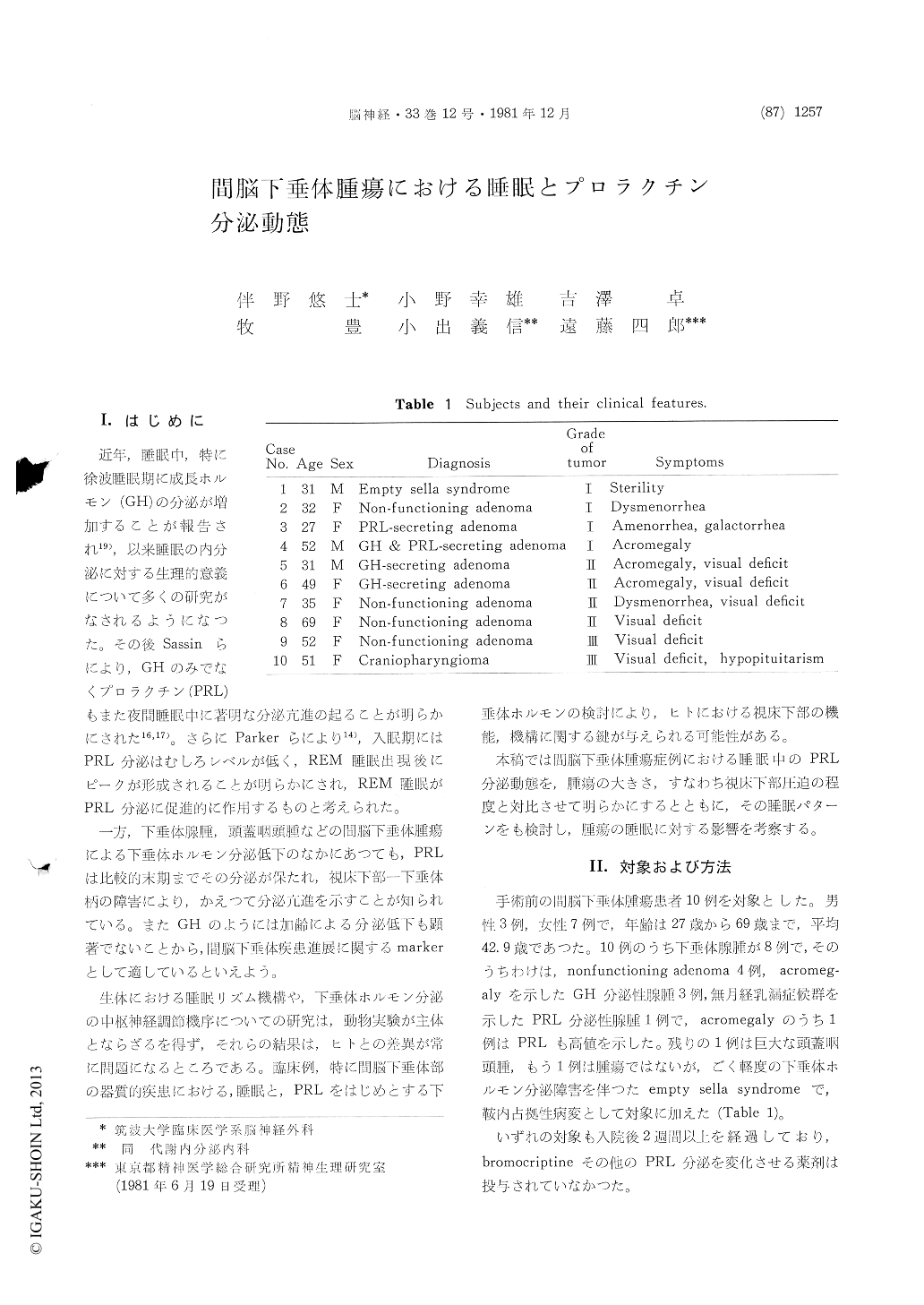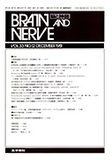Japanese
English
- 有料閲覧
- Abstract 文献概要
- 1ページ目 Look Inside
I.はじめに
近年,睡眠中,特に徐波唾眠期に成長ホルモン(GH)の分泌が増加することが報告され19),以来睡眠の内分泌に対する生理的意義について多くの研究がなされるようになつた。その後Sassinらにより,GHのみでなくプロラクチン(PRL)もまた夜間睡眠中に著明な分泌亢進の起ることが明らかにされた16,17)。さらにParkerらにより14),入眠期にはPRL分泌はむしろレベルが低く,REM睡眠出現後にピークが形成されることが明らかにされ,REM睡眠がPRL分泌に促進的に作用するものと考えられた。
一方,下垂体腺腫,頭蓋咽頭腫などの間脳下垂体腫瘍による下垂体ホルモン分泌低下のなかにあつても,PRLは比較的末期までその分泌が保たれ,視床下部—下垂体柄の障害により,かえつて分泌亢進を示すことが知られている。またGHのようには加齢による分泌低下も顕著でないことから,間脳下垂体疾患進展に関するmarkerとして適しているといえよう。
Plasma prolactin (PRL) concentration during sleep and sleep pattern in 10 patients with hypothalamo-pituitary tumors, i.e. 8 pituitary adenomas, one craniopharyngioma and one empty sella syndrome, were analyzed in comparison with size or degree of suprasellar extension of the tumor.
Sleep polygraphy was recorded for two consecu-tive nights after an adaptative night, and sample of blood for PRL assay was drawn every 30min simultaneously. Degrees of extension of the tumor toward the hypothalamus were classified in three grades as follows; grade I: Intrasellar tumor or minimal suprasellar extension; grade II: Moderate suprasellar extension and elevation of the anterior part of the third ventricle; grade III: Large sup-rasellar extension and marked elevation of the third ventricle.
In grade II and III, PRL release during sleep was alterred in proportion to enlagement of the tumors; episodic secretion was blunted in mild suprasellar extension, then mean PRL concentration was ele-vated and episodic secretion became clear again in moderate extension, and finally PRL level was lowered and increament related to sleep was disap-peared. It has been considered that these changes were caused by disturbance of PIF transport due to collapsing of hypophyseal portal system by the tumor and hypof unction of anterior pituitary itself.
Increased frequency and markedly prolonged awakening periods were the most striking charac-ters of sleep pattern in grade II and III. Further-more, decrease of slow wave sleep, especially absence of stage 4, was added finding in grade III. That is to say, sleep pattern in patients whose hypothalamus were under pressure of the tumors showed a tendency toward awakefulness. This rusult could be explained that a large majority of the pituitary tumors may put pressure upon the anterior hypothalamus, which has been called 'sleep center', and 'basal forebrain synchronizing area' called by Sterman and Clemente.

Copyright © 1981, Igaku-Shoin Ltd. All rights reserved.


